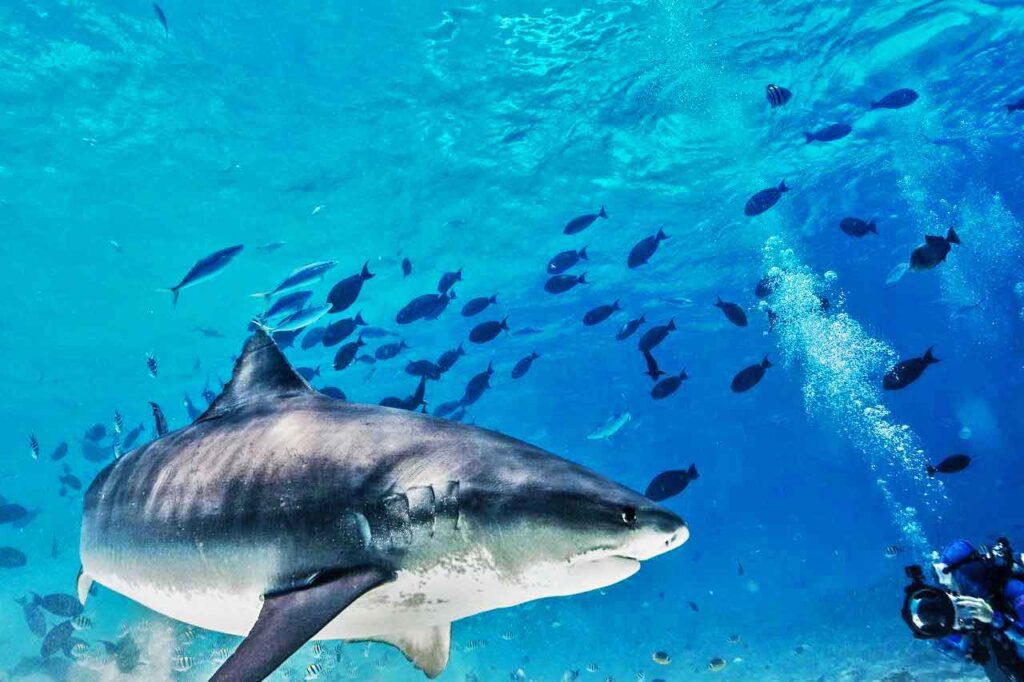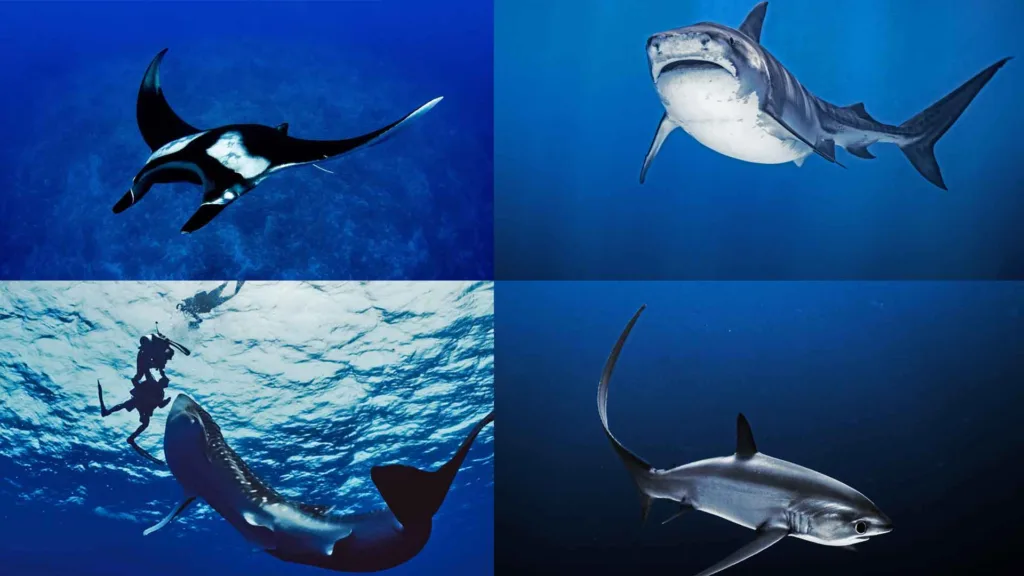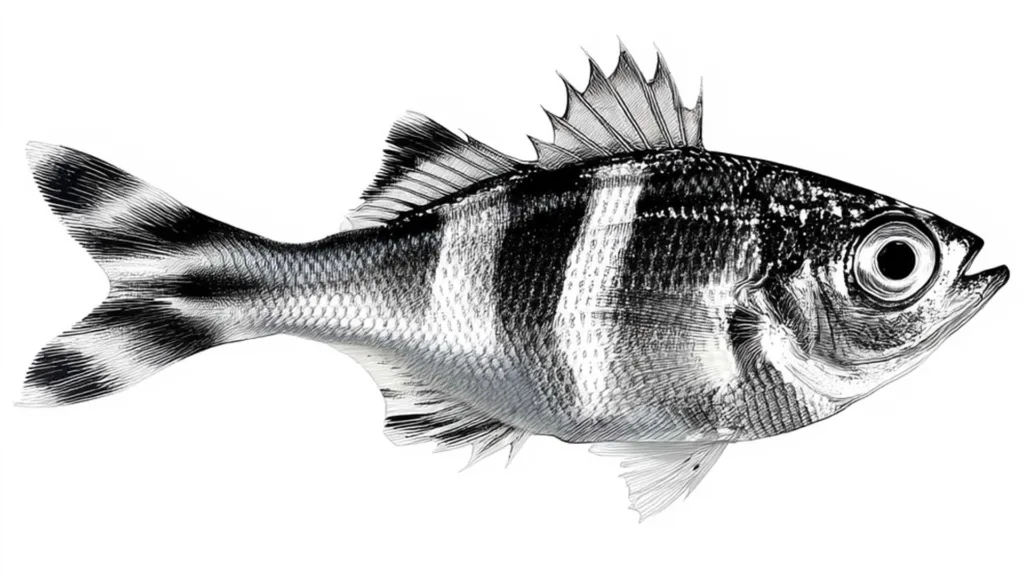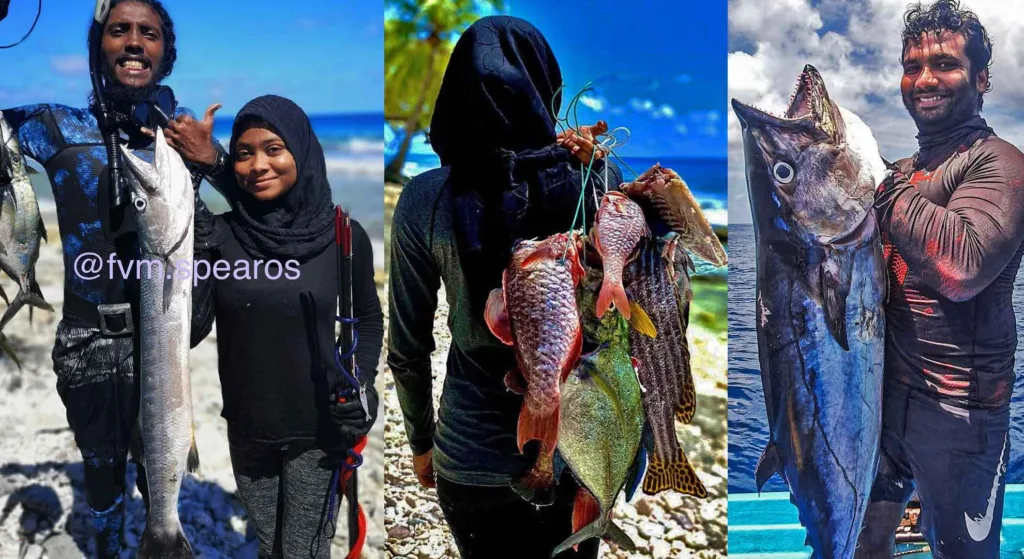
I used to go fishing with my late uncle, Abdulla Rafeeq, when I lived in Fuvahmulah around 30 years ago. One beautiful sunny day, my friends and I began walking towards the beach. On that day, I didn’t go fishing. If I didn’t accompany my uncle, I’d go to the beach with my friends when he got back from fishing.
We visited the beach to observe the bokkura, the smallest fishing boat in the Maldives. Normally, there are three to four fishermen aboard the bokkura.Around 1:30 p.m., we noticed the bokkura cruising through Nere’s passageway (narrow passageways were created by blowing the reef flat, allowing fishing vessels to reach the island), heading towards the beach. While the bokkura was in the middle of the passageway, we noticed a large fish attached to one side of it. We were curious.
We enquired about what it was as the bokkura approached the shoreline. “It’s a femunu miyaru (tiger shark),” explained my uncle. They couldn’t fit the shark in the vessel, so they attached it to the bokkura. There were many people on the beach, waiting for the tuna catch. My uncle’s bokkura had a few reef fish, and the shark was the only main fish that they caught.
Everybody on the beach was curious. They gathered near the bokkura to help unload the huge shark and keep the massive creature on the beach. Additionally, everyone assisted in bringing the bokkura onto the beach. A fisherman took a large knife and cut the shark’s belly. He removed 12 baby sharks and kept them on the beach. Seeing the tiny, stunning sharks piqued our interest. The small baby tiger sharks measured about two and a half feet long.
We were not prepared to swim at the beach. But we were so excited to release the small sharks into the passageway. This mission involved approximately six of us, all of whom were around the age of twelve or thirteen. We released the sharks into the passageway. As soon as they touched the water, they swam as if they were born in the ocean. The baby sharks darted and swam in various directions—some towards the reef, others towards the shoreline. Some sharks darted towards us, and we were afraid they would bite. But they didn’t.
We intended to catch all of the sharks and release them into the open sea. So, we collected them from the passageway and headed to the reef front. All twelve sharks were released into the open sea at that point. The sharks were all swimming in the open sea. That happened exactly 30 years ago on Fuvahmulah, an island known for its iconic tiger shark species. We didn’t know these species would draw tourists or that they were vital to the ecosystem. Our fisherman caught and brought the shark so we could eat its meat.
The Maldives implemented a shark fishing ban in 2010 as a result of the shark population’s decline. Sharks are an important species in the ecosystem, as well as a vital tourist attraction. Shark fins were exported. People in the area ate shark meat. And the livers of these species were used to produce oil for a variety of applications. The gulper shark (Kashi miyaru) was most commonly fished for its high oil yield.
The Maldivian fishing vessels known as dhoni and bokku are made of wood. To keep the vessels in excellent condition, a locally made oil, such as shark liver oil, is simple to make and extremely effective at preserving the wood. The most common sharks caught for this purpose are tiger sharks, which have large livers, as well as whale sharks and bluntnose sixgill sharks. There were times when we couldn’t obtain tuna or other popular fish. During such a difficult time, it was customary to consume other types of fish, including sharks.




